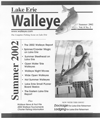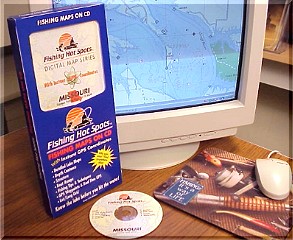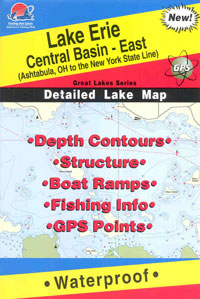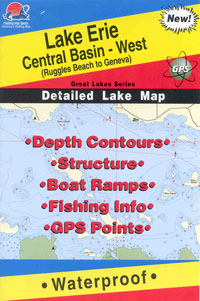Few anglers would argue the effectiveness of planer
boards. In fact, many would argue that planer boards are the most deadly
lure delivery system ever invented. Not only do planer boards enable anglers to fish multiple lines and lures, the amount of water that can be quickly
covered with a planer system is second to none.
to fish multiple lines and lures, the amount of water that can be quickly
covered with a planer system is second to none.
In addition to straining water and offering multiple
lines, planer board fishing is also the best way to tempt strikes from wary
species such as brown trout, steelhead or heavily fished walleye; However,
these sought after species aren't the only targets of planer board fishing.
Hardly a fish swims that doesn't regularly fall prey to anglers using a
planer board system. Salmon, trout, walleye, steelhead, muskie, pike, bass
and even large panfish such as crappie and white bass are commonly taken
with the help of these trolling aids.
Planer boards are effective and easy to use. To get the most from these
trolling aids, anglers must understand a few of the basics of planer board
fishing.
UNDERSTANDING DUAL BOARD SYSTEMS
Different types of planer boards are designed for different fishing
applications. Anglers can choose from two types of planer boards. The most
popular type of planer board system are dual boards or what some anglers
refer to as mast systems.
A dual board planer system includes a set of boards that feature two
runners attached parallel to one another. The Riviera Dual Planer Boards are
collapsible, making them easy to store even in small boats. These boards
also feature three tow point adjustments for different wave conditions and a
durable maintenance free design. A dual board system also requires a six
foot planer mast that mounts near the bow of the boat. A tow line/reel
system attaches to the mast and allows the planers to be easily deployed and
retrieved.
The boards of this type of planer system are normally set to run 50-100
feet out to the side of the boat. In calm water the boards are set out the
furthest. Fishing lines are attached to a dual board system by using
specially
designed spring loaded pinch pads. These pinch pads with the fishing line
secured between their jaws are then attached to the tow line using a shower
curtain hook (aka quick clip). As the boat trolls forward, line is played
off the fishing reel allowing the line release and lure to work down the tow
line towards the planer board.
Commonly called planer board releases, Off Shore Tackle is the worlds
largest manufacturer of planer board releases designed for all types of
fishing situations. The size of these line releases, pad diameters and
tension settings vary depending on the size and type of fish to be targeted.
The line release has two functions. First it must hold the line securely
while trolling at a variety of speeds and varying line diameters. Second
this fishing aid must release its grip on the line once a fish strikes.
Designing a release that masters these functions is no easy task. A quality
release provides enough tension to insure fish are solidly hooked before the
line slips free. It's also essential that the release function over and over
again without damaging the fishing line.
Most releases on the market either have too much tension, or not enough.
Many of these products abrade the line and few can withstand the tortures of
day to day fishing. It's important to note that no single release is
universal to all types of fishing. That's why Off Shore Tackle produces a
wide variety of line releases that are suitable for all trolling
applications.
When targeting smaller species such as walleye, lighter tension releases
are employed. The OR-IO release is the best selling walleye release on the
market. The sliding spring allows the tension setting to be easily adjusted
as desired. When fishing in rougher water or for larger walleye, the OR14
release is the ideal choice. Like the OR10, this release has a sliding
spring adjustment. The slightly heavier spring tension of this release
allows anglers to troll in rough water or at faster speeds without false
releases. .
Larger species such as trout or salmon require line
releases with more spring tension. The OR-3 was designed especially for
anglers who target steelhead, brown trout and trophy walleye. The larger pad
diameter of this release increases the friction on the line without having
to significantly increase spring tension. The amount of tension desired can
be adjusted by how deep the line is placed in the rubber pads. The deeper
the line is placed in the pads, the more tension it requires to trigger the
release.
The OR-17 is similar to the OR-3 except the release has stronger spring
tension. Ideal for high speed trolling or when fishing in rough water or
when pulling large plugs, dodgers and other attractors, this product has
been an immediate success with salmon anglers. For muskie anglers, the OR-30
is the most requested planer board release. This release is similar to the
OR-3 and the OR-17 but it has the heaviest spring tension available.
Also available is the OR-19, a small release with a very strong spring
tension. Popular with charter captains who prefer a release with extra
tension, the OR -19 insures positive hooksets and the maximum number of
landed fish. Often when a fish strikes a lure attached to the OR- 19, the
line doesn't pop free of the rubber pads. The angler however can easily
trigger the release by simply snapping the rod tip quickly toward the
release. Triggering the releases as desired helps charter captains manage
lines and reduce tangles better when two or three fish may be hooked at the
same time. Matching line releases to the target species insures that anglers
will enjoy the best possible success."
Dual board systems can be used on virtually any boat and
for any species. The primary advantage of this type of planer board system
can't be disputed. Once a fish strikes and the line is popped free from the
release, the angler is free to fight the fish. This convenience is the
primary reason so many dual board systems are currently in use.
Dual boards also have the advantage of being able to deploy large numbers
of lines. Many anglers fish up to five lines per side with the help of dual
boards. Anglers who are often faced with rough water also favor dual boards.
The larger board size helps this planer system plow through rough water when
fishing both with and against the waves. The versatility of the dual board
system is a major reason why so many anglers swear by them.
WHY IN-LINE BOARDS?
In-line boards such as the Off Shore Tackle OR -12 Side Planer have seen
significant increases in sales in recent years. Price is one of the major
reasons these small boards have caught on so quickly. For less than $50.00 a
pair an angler can get started planer board fishing. Compared to dual board
systems, in-line boards are less expensive. In-line boards also have some
other unique features that has helped them carve out a significant niche in
the planer board market.
Because in-line boards attach directly to the fishing line, the board
becomes a strike indicator that makes it easy and fun to tell when a fish
has been hooked. The weight of a struggling fish causes the board to surge
and sag backward in the water. When two or more of these boards are being
fished side by-side itís especially easy to tell when a fish has been
hooked.
When a fish strikes and is hooked, the board"and fish are reeled in
together. " Depending on how the board is attached to the fishing line, the
angler can either reel in the board and quickly remove it, or release the
board and allow it to slide down the line while fighting the fish. We'll get
in more detail on how to rig in-line boards in another feature.
Walleye anglers are some of the most devoted in-line board users, but
these smaller sized boards can be used effectively on any species of fish.
The important thing to know about in-line boards is not all are created
equal. A good in-line board should be large enough to support the weight and
drag of common trolling tackle such as deep diving crankbaits, snap weights,
lead core line, attractors and other gear. Many boards simply aren't big
enough to get the job done.
An in-line board should also be ballasted properly. The
OR-12 Side Planer is carefully weighted so the board rides nose high and
always rights itself in the water. Boards that aren't ballasted correctly
tend to dive inrough water causing all sorts of problems.
Because in-line boards are small, they can be tough to see on the water.
The OR-t2 features a bright red flag that contrasts with the yellow board,
making them easy for other anglers in the area to spot The OR-12 is also
versatile enough to be rigged in a number of ways suitable for walleye,
salmon, trout and a wealth of other species.
We all know that planer boards are the fast track to
better fishing success. If you're new to fishing, a set of in-line boards is
a great way to test the waters and see for yourself how effective
planer fishing can be. If you're Serious about fishing big water and big
fish, a dual board system is an investment you'll never regret. Here's to
more and bigger fish.






 to fish multiple lines and lures, the amount of water that can be quickly
covered with a planer system is second to none.
to fish multiple lines and lures, the amount of water that can be quickly
covered with a planer system is second to none.